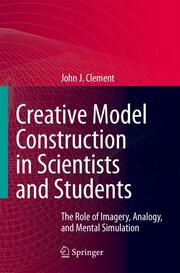Detailansicht
Creative Model Construction in Scientists and Students
The Role of Imagery, Analogy, and Mental Simulation
ISBN/EAN: 9781402067112
Umbreit-Nr.: 1064767
Sprache:
Englisch
Umfang: xxviii, 602 S.
Format in cm:
Einband:
gebundenes Buch
Erschienen am 25.06.2008
Auflage: 1/2009
€ 160,49
(inklusive MwSt.)
Nachfragen
